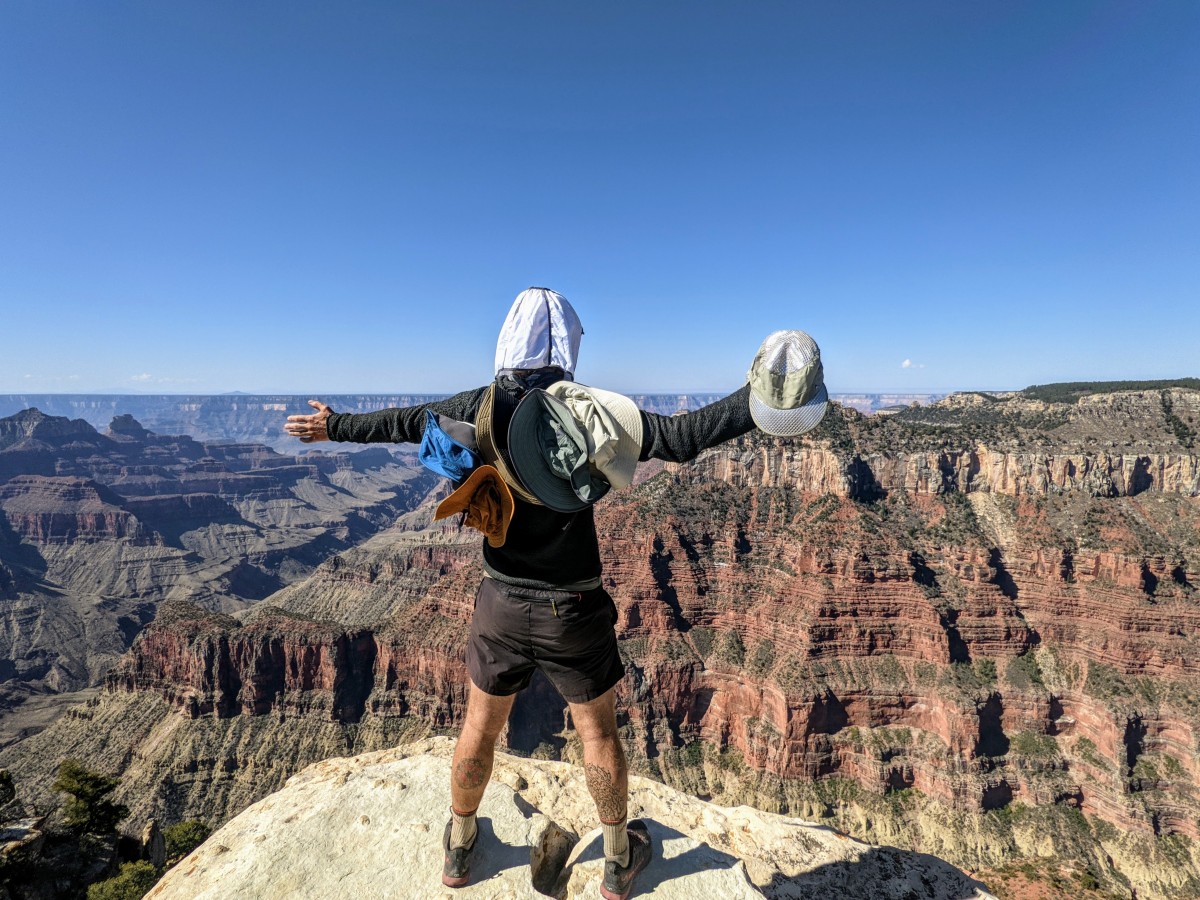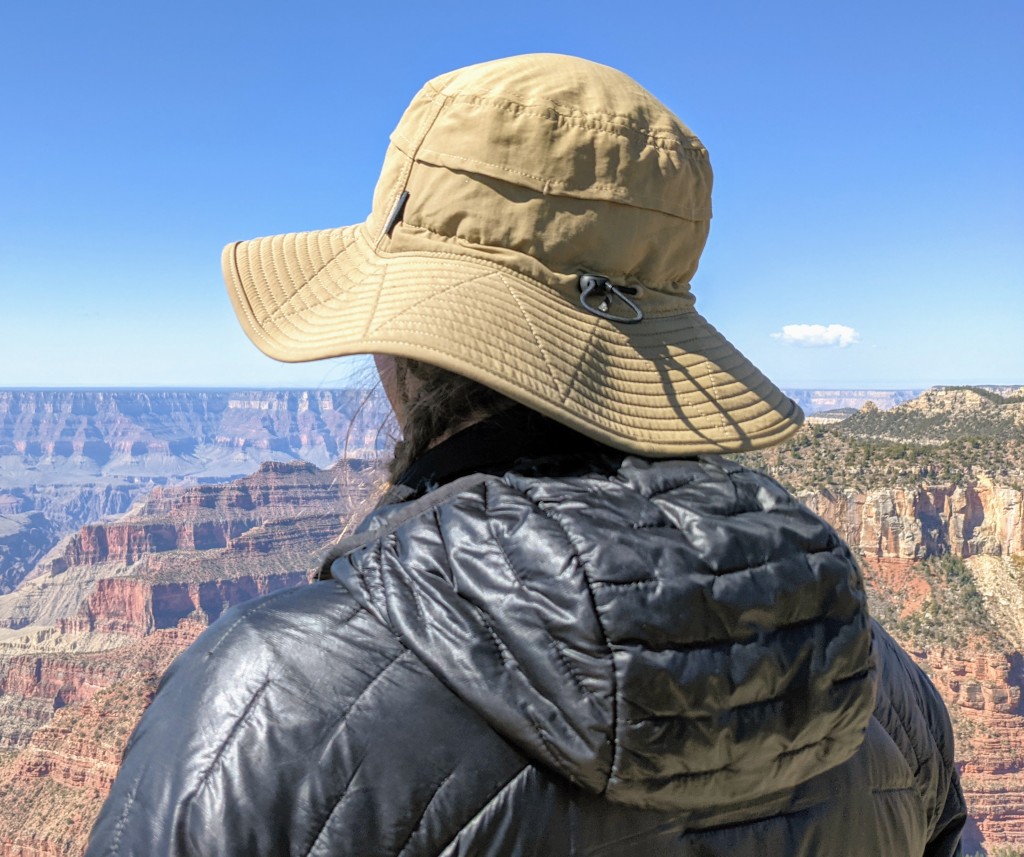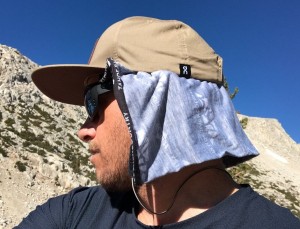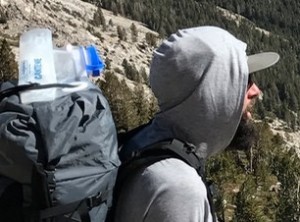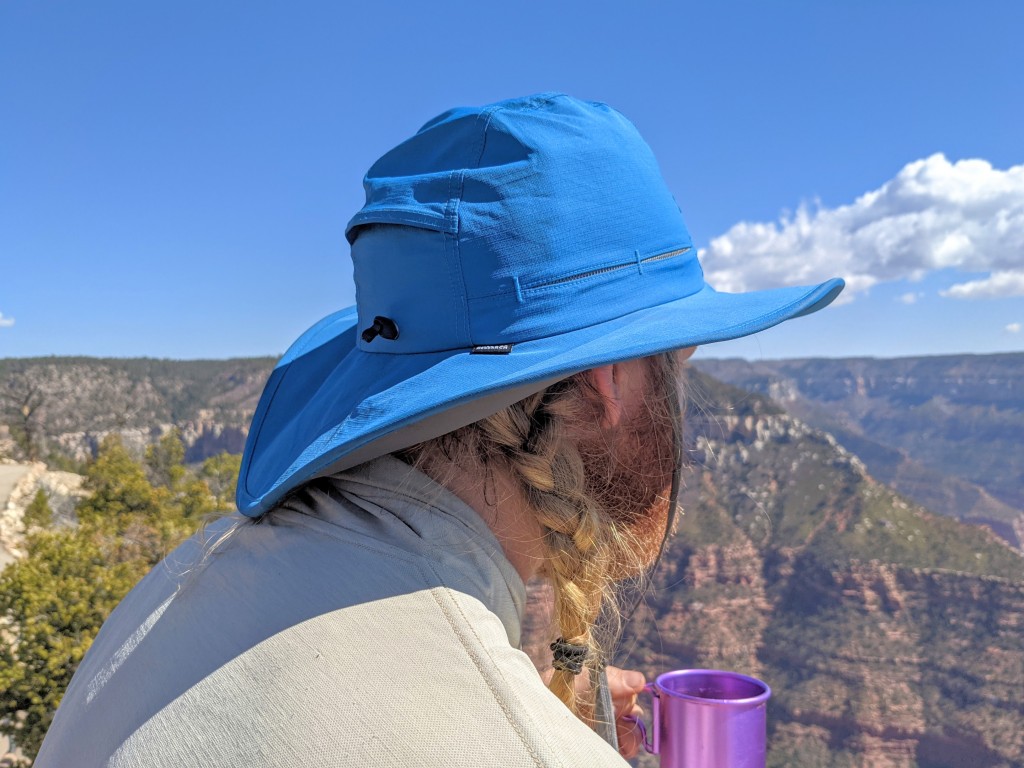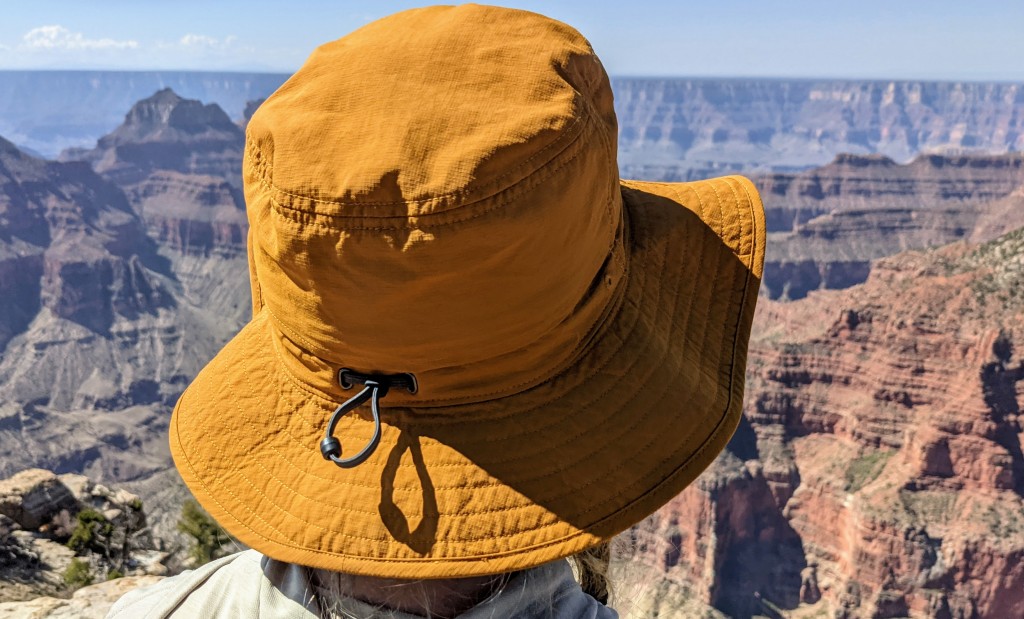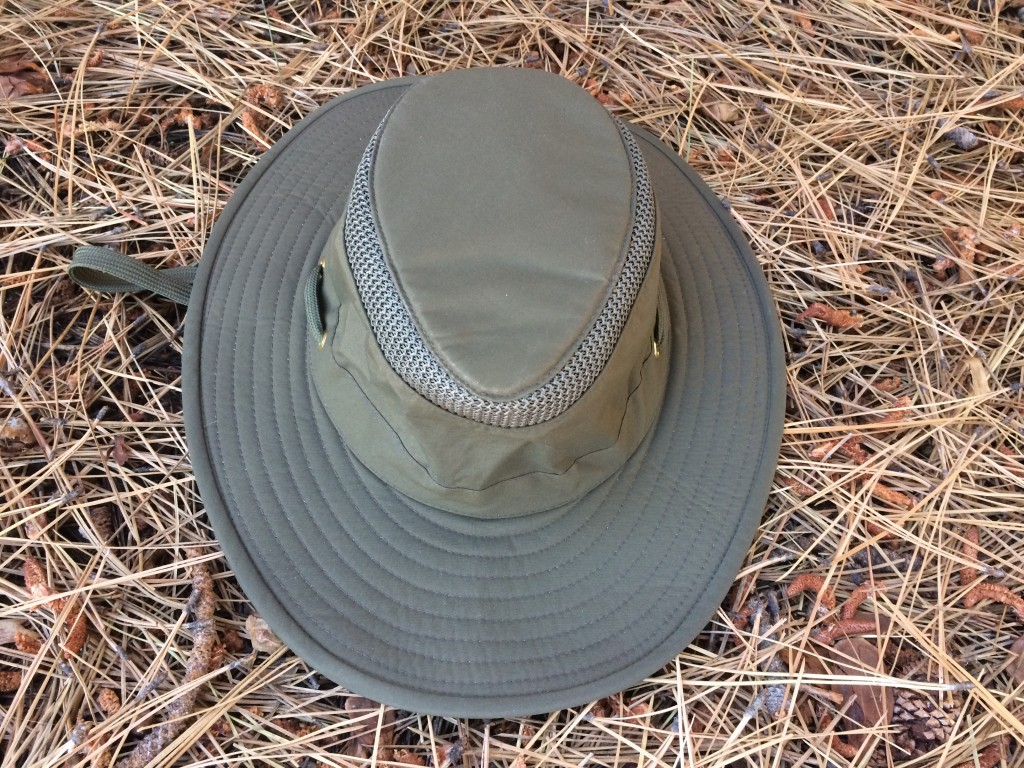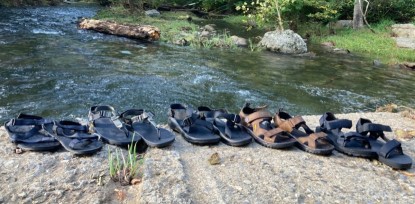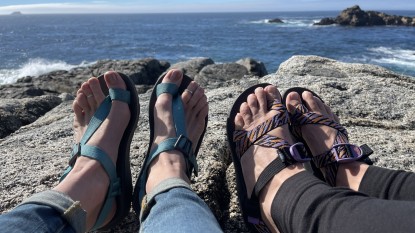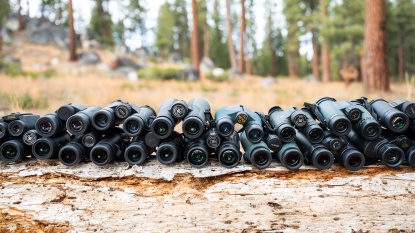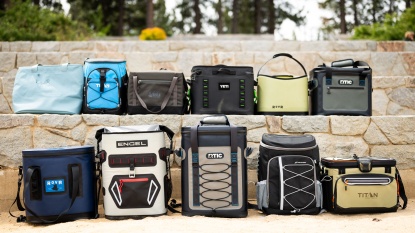How do you buy a sun hat? In this article, we will cover all the things to consider before you purchase this essential piece of clothing for any outdoor activity.
Types of Sun Hat
Many people think of ball caps and trucker hats as sun hats — which they are, but there are so many more levels to sun protection above and beyond the simple ball cap. We outline these below.
Full Brim
This category is what you may think of as your traditional sun hat. These come in all sorts of materials, from straw to felt, and brim sizes, from barely-there to ginormous. The majority of the hats in this review are made of synthetic materials like nylon to make them more breathable and moisture-wicking. And they all come with UPF-rated materials meant to guard your skin. The brim widths of the hats we tested range from 2.4" to 4". The broader the brim, the more protective. But, a wider brim means it will obscure your vision more. If you are doing activities like backpacking, you may want to consider a smaller brim or a cape-style hat (see below) because a wide back brim will bump into your backpack.
Cape Style
This style of hat includes a brim in the front and a cape that covers the back of your neck. We've discovered this style of hat offers the most effective protection from the sun. Even when the sun is low in the sky, the cape covers your neck. These hats are great for backpacking because there is no back brim to brush against your pack all day. The drawback to this hat style is that they are not very stylish, and you may look silly — but you won't get skin cancer! You can sometimes tuck the cape into the hat when you don't want to look silly, but this will affect the fit.
Baseball Cap
These models are trendy because they're cheap, available everywhere, and stylish. The drawback to ball caps is that they do not provide excellent coverage. Your ears, neck, and the sides of your face will always be exposed to the sun. But if a ball cap is all you're willing to wear, it's better than nothing. We've had good luck pairing ball caps with sun hoodies for extra protection when necessary. The only ball cap we tested was the Outdoor Research Sun Runner Cap, which comes with a detachable neck cape for extra protection.
Sun Hoodies
These fall in the sun shirt category and are a great, versatile option, especially when you're partial to wearing trucker or ball caps. It is handy to wear a cap when climbing, and we've discovered that being able to pull a hood up to protect our necks when climbing works well and saves sunscreen. Be sure to choose one that is light and airy so you'll wear it, even on sunny days.
A cap offers little neck and ear protection. However, if you add a Buff (aka Multifunction Headband) or a sun hoody, you can get as much protection (or more) as a standard sun hat. Either slide the Buff under the hat or, for more ventilation, use safety pins to pin it up higher. You can also use a bandana instead of a Buff. Using a sun hoody + cap combo gives you the best ear and neck protection of any option. However, it can be much warmer and less ventilated than a wide-brim sun hat. Check out our round-up of sun shirts for hoody recommendations.
As you can see in the photos above, the “Buff under hat” and “sun shirt + cap” options don't offer great protection when the sun is lower and from the side.
Hat Sizing
We've noticed that every manufacturer's sizing chart is slightly different. If you get an accurate measurement of your head, you should be able to determine the right size to order using each manufacturer's chart. To measure your head, take a flexible tape measure and wrap it around the largest part of your head in the back and right over your eyebrows. If you don't have a flexible tape measure, you can use a piece of string and then lie it flat on a ruler to get the measurement. We did our best to note when a hat runs large or small throughout our reviews, and especially whether it's adjustable. Sun hats can be uncomfortable to wear if they're too tight and annoyingly shifty if they're too loose, so getting the sizing right is important, especially for technical use.
Color Choice
Sun hats come in a wide array of choices these days, and you'll want to be happy with the one you choose. Keep in mind that darker colors like black, dark brown, dark greys, and reds will heat your head more than the lighter options. We've also noticed that dark colors fade in the sun more quickly. Conversely, light colors like whites, beiges, creams, and light blues will keep your head cooler and fade less. However, these colors tend to show dirt. So if you know you'll be touching your brim with grubby hands, you may want to consider something slightly darker.
Below, we run through all the criteria you should consider when buying your new sun hat, which we considered in our review, from most important to least.
Protection
Sun hats are great for protecting your skin from the sun's harmful UV (ultraviolet radiation) rays and can save you the hassle of putting sunscreen on your face. All of the hats we tested have a UPF (Ultraviolet Protection Factor) rating between 30 and 50+. UPF is a rating system that measures the amount of UV radiation admitted through fabrics. A UPF rating of 30+ blocks about 96 percent of UV radiation, while a UPF rating of 50 blocks about 98 percent. Anything above that, including 50+, blocks more than 98 percent.
Many of the hats we tested have mesh ventilation on the sides. This decreases the hats' UPF rating, but only by a small amount. Many companies rate the mesh fabric (without the holes) the same rating as the rest of the hat, leaving only a small portion of sunlight to break through the holes. This may be why Conner does not specify the UPF rating of their hat because its crown is fully meshed. We believe will let more sun get to your scalp.
When selecting a hat, you need first to figure out what kind of brim you want. There are very large brims that protect the largest area of skin. These are good if you are just hanging out and not moving around too much. There are also bucket hats that usually have smaller brims for more active pursuits, but these have less protection. Then there are sloped brims that cover selected areas throughout the day as the sun drops or rises. The slope of the hat protects throughout this cycle. Some of the hats we reviewed have darker material on the underside of the brim to protect from glare, too. This is especially important if you plan to be on water or snow.
If sun protection is your number one priority, consider a cape-style hat. As noted above, hats with neck capes will protect you better than full-brim options because the cape covers your neck. The changing angle of the sun doesn't affect coverage with this style of hat. The downside is that these are less stylish and can occasionally feel uncomfortably hot. So, you'll need to decide if you'll actually wear a cape-style hat. Sometimes you can stuff the cape up in the hat when you don't want to look so silly, too. But remember, the most protective hat is the one you actually have on your head!
If you get something that doesn't completely cover your head and shoulders, make sure you wear sunscreen on your exposed skin, so you don't get burned. It's better to put sunscreen on the parts that you think are protected, too. Because, sometimes, when you turn your head, you expose unprotected skin to harmful UV radiation.
Comfort
A very important thing to decide before buying a hat is what activity you will be wearing it for. If you are going to wear it climbing, you might want one with a smaller brim so that when you look up the climb, the hat doesn't hit your back and fall off. If you are going to wear it running, get a lightweight hat that breathes well and doesn't fly off in the wind. Also, be sure the one you choose fits properly. An ill-fitting hat can either give you endless headaches if it's too small or will feel loose and unstable if it's too big. So before you buy one, measure your head following the specific company sizing guidelines.
Another aspect to consider when evaluating products in this metric is the visibility (or lack thereof) provided by each hat. How much visibility you have when wearing it significantly affects your comfort. Because, with poor visibility, you won't be able to enjoy your surroundings. And, not enjoying your surroundings is uncomfortable! Even worse, if you're doing something technical, it could affect your safety. Protection from the sun isn't as important as not falling on a technical descent. The wider the brim on a hat, the lower the visibility — especially if that brim flops over your eyes. We've noted in each review if a hat has visibility issues.
Breathability
Wearing a hat to block the sun on a hot day can cool you down. But, it can also make your head hotter if it doesn't breathe well. Breathable fabrics are used in most sun hats and will not overheat unless you are doing physical activity. In this case, you'll want to choose a hat with good ventilation throughout the crown. Ventilation typically comes in the form of eyelet vents or mesh paneling. Mesh paneling generally provides the best cooling ventilation, but well-placed eyelet vents can do a lot to promote airflow. Check our individual reviews for our recommendations here.
Durability
A good hat will stick with you for many years and on many adventures. Again, the likelihood of it holding up over time depends on how you plan to use it. If you're just looking for a hat to wear around town or on the beach, you don't need to find an extremely durable and rugged option. If you know you'll never have to pack your hat into luggage, then you can worry less about crushability, too. But if you're going to be shoving your it into a gritty pack again and again, then you definitely want to emphasize this metric and find a hat that can hold up to abuse.
The most durable hats can be folded, rolled, or crushed into a pack and generally bounce back into shape when worn. They're made of materials that won't snag or tear easily. And, they're crafted with care so the seams won't bust and the fabric won't fray. We've noted throughout our individual reviews which products can hold up to rugged use and which need to be babied to last.
Many hats for sunny activities are light in color since those reflect heat. When making a purchase, remember that although a white one may be the most effective, it will get dirty and stained. So, we suggest a hat that is easily washable or just a little bit darker so the stains won't show as much.
Another key thing to look at is the material the hat is made of. If you buy a $10 straw hat from the gas station, you will get about $10 worth of hat. We suggest a hat made from nylon or another synthetic and breathable material for its strength.
Style
Style is important when buying anything, let alone a sun hat. So before you buy one, make sure you won't look like a total fool wearing it. Unless, of course, you just don't care, then go for it! Before purchasing, see if you can get another opinion; sometimes, what looks good to you in the mirror might actually just be your wild imagination.

